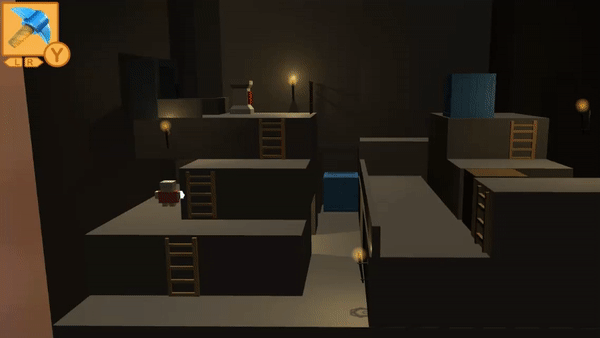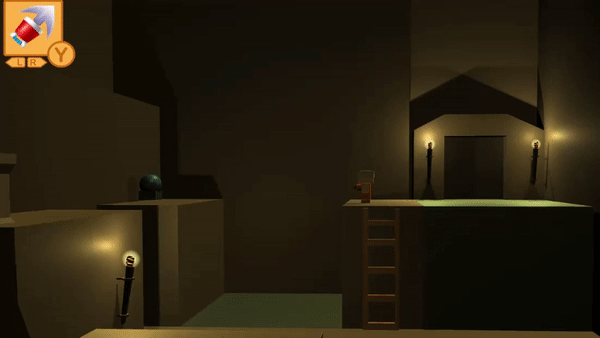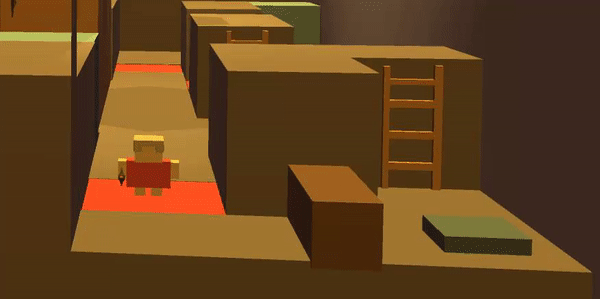Portfolio Website
Cavern Depths
A puzzle game with the camera system of Captain Toad where you use Zelda-like items to find the treasure
You can download the game right here: https://fontys-gdt.itch.io/cavern-depths
Introduction
Demo
Summary
Cavern Depths was made for my Semester 4 Duo Project. The Duo Project’s genre was limited to 4 genres, one of them being a platformer. Me and my duo partner, Kayleigh came up with an idea to combine the camera system of Captain Toad’s Treasure Tracker with the exploration and gameplay loop of The Legend of Zelda. This project was my first
The game centers around the player going into a cavern, going from room to room to solve different kinds of puzzles that will give them access to the next room to eventually get the treasure. Once collected, the player would have to traverse back all the way to the entrance of the cavern. The player can’t jump, so they would have to think carefully and look around the room first. You also have your trusty pickaxe which you can use to smash rocks that are in your way.
My Contribution
During this project, I worked on the camera system, the puzzle mechanics such as the switches, moving platforms, and the key, the items in the game like the pickaxe and hookshot, and worked on designing the different rooms. During this project, I learned about the principles of Game Design, more experience in Unity and also learn the basics of level design.
Process

Camera System
The player can move the camera horizontally around the room to explore what they previously couldn’t see. The controls are linked to the right joystick and programmed so that you can influence the speed of the rotation based on how far you pull the joystick. The camera would also move the player vertically so that it stays on the same level as the player and it opens more visibility to the player.

Hookshot
The pickaxe is not the only item the player obtains. In the second room, the player unlocks the Hookshot, which allows them to launch a hook in the direction they are looking at. The hookshot is programmed to activate switches when in contact, but also to pull the player towards them whenever it hits a pillar. The pillar is programmed so that the hookshot would snap to the middle of the target once it hits it. This was designed to feel fairer for players who hit the target but don’t get pulled.

Puzzle Mechanics: Buttons
During the game, the player encounters challenges in the form of puzzles that they would have to solve. An example here is the buttons and gates. In the room, there are two gates, the red one and the blue one; One is up and the other is down. When the player walks over a button, the gates switch, the one that was down will go up while the other one that was up will go down. The button is then deactivated so that the player can’t walk over it again to activate the gates. The button does become activated whenever the player walks over another button. This is designed so that the player would need to think about the decisions and consequences of walking over a specific button.